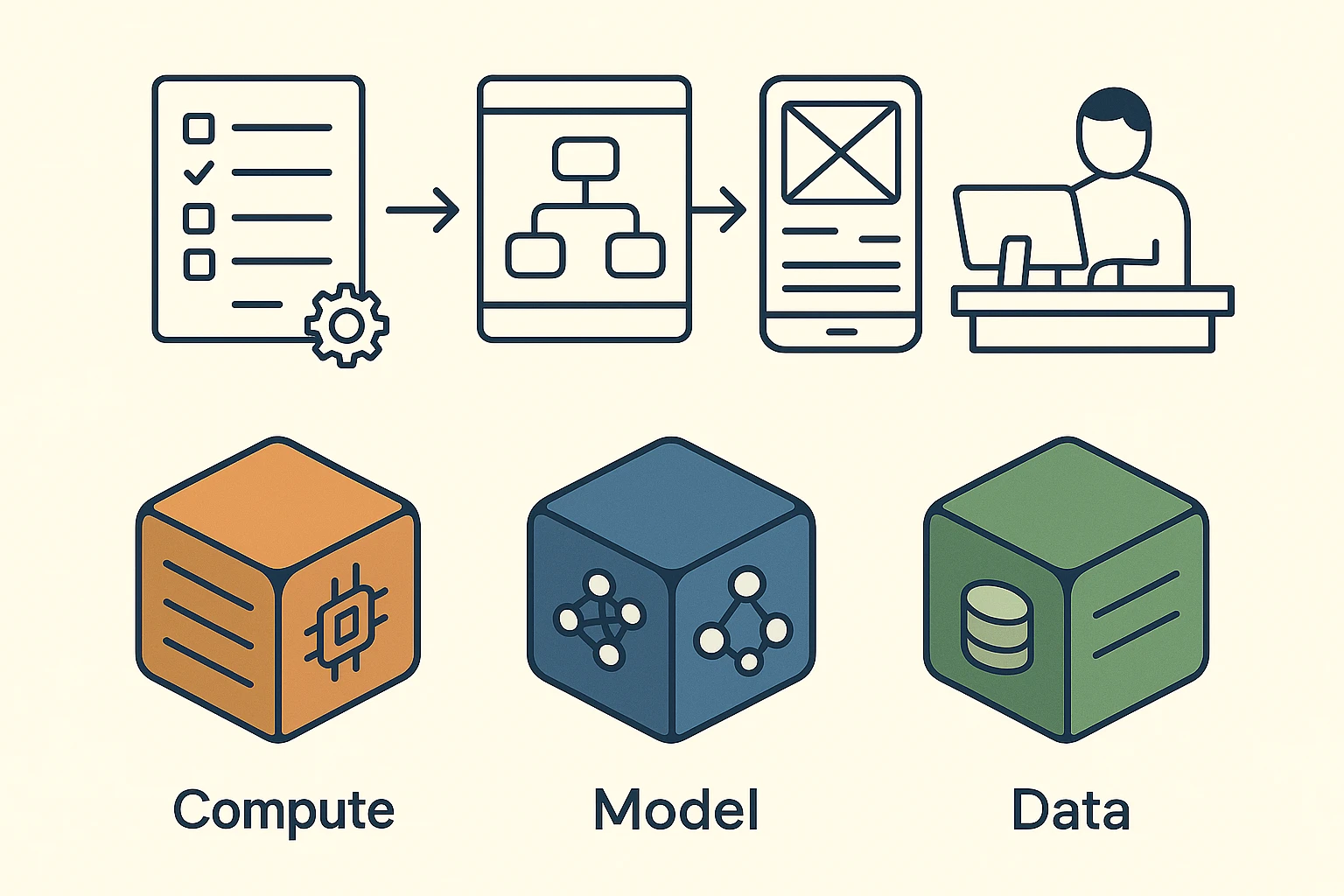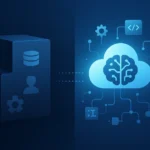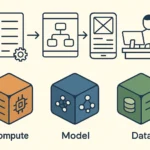In the not-so-distant past, building a digital product followed a familiar rhythm: define requirements, map user flows, design wireframes, and hand them off to engineering. Success was measured in clarity, velocity, and execution.
That process still matters — but the foundation has changed.
Today, compute, model, and data have become the new building blocks of product design and strategy.
Compute: The New Canvas
Every design decision now depends on compute. Latency, inference speed, and processing cost determine what the product can do. Choosing between cloud providers or GPUs isn’t just an engineering call — it’s a product decision that defines user experience.
A lag of 300 ms can mean the difference between a delightful interaction and a broken one. Product managers and designers now need to understand how infrastructure affects experience, not just what the user sees.
Model: The New Behavior Layer
The model is the product’s brain. It defines personality, adaptability, and limits.
Instead of designing static interactions, teams now design relationships — tuning models to learn from context, history, and feedback loops.
In older workflows, we wrote copy and designed flows. Now, we train tone and fine-tune responses. Every product iteration becomes a behavioral update, not just a visual one.
Data: The New Source of Truth
Data is the fuel that makes computing and modeling valuable. Without the right structure, freshness, and permissions, even the most advanced model fails.
Great AI products don’t start with screens — they start with clean pipelines and ethical frameworks for how data is used, shared, and retained.
When product, design, and data teams collaborate from the first sprint, the result isn’t just usability — it’s continuous learning.
The New Design Mindset
We’ve moved from static blueprints to living systems.
The product definition stage is no longer a handoff; it’s a conversation between compute, model, and data — orchestrated by design thinking and guided by human empathy.
The next generation of product leaders will be those who can sketch user journeys and understand how token cost, model weights, and data freshness shape those journeys.









